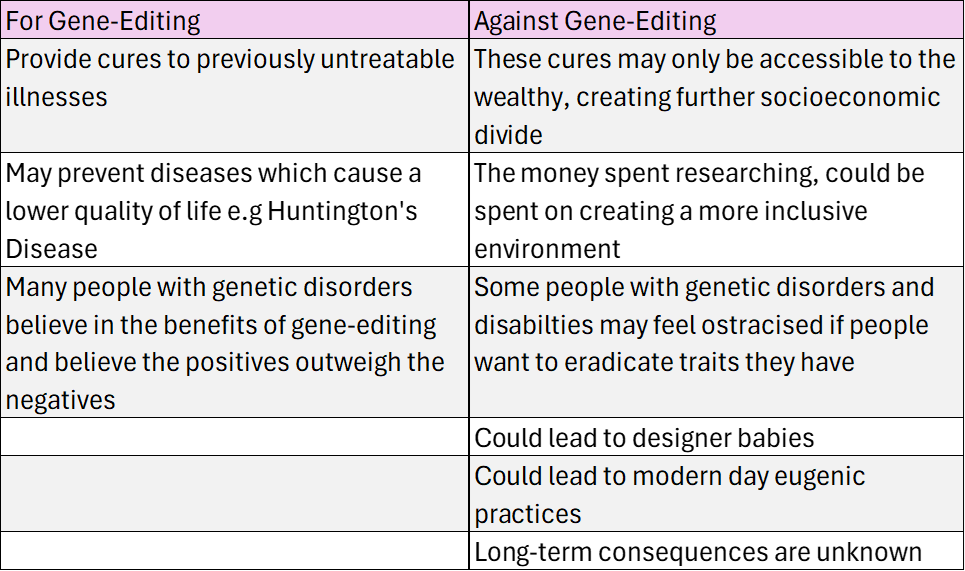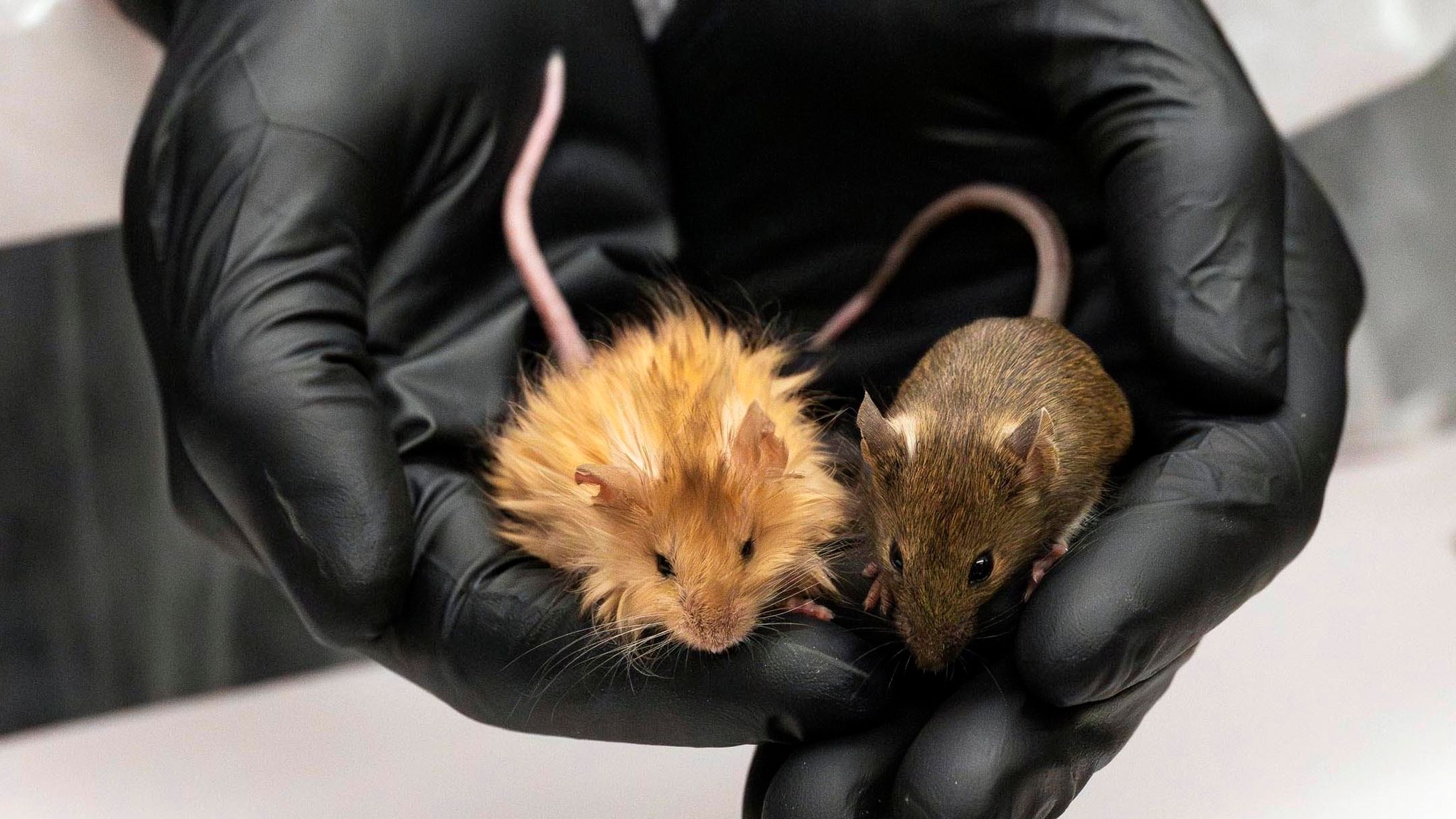When we first looked at gene editing, I had mixed feelings. As some who studies engineering, I believe in innovation and using technology to help people. However, as some whose sibling has a disability, I thought about how the advancement of gene editing pushes the narrative that those with disabilities need ‘fixing’. Therefore, I decided to research the topic further.
First of all, what is gene editing?
Gene editing is the process of deleting, inserting or replacing genetic material within animals, plants and bacteria to alter their characteristics. It has different applications, but I’m focusing on gene therapy and using different techniques to treat diseases. The development of CRISPR-Cas9 has created a quicker, cheaper method for gene editing, leading to the current buzz around the topic.
Laws surrounding gene editing:
While it is illegal in the UK to implant a gene-edited embryo, in 2016, the HFEA approved licensing to allow gene editing of human embryos in research. Many of my classmates thought this was a good change as it could lead to more knowledge and potential cures about inheritable disorders like Cystic Fibrosis. However, is this any different from previous attempts in eugenics? The removal of genetics at an embryonic level will lead to the eradication of different, ‘undesirable’, traits from society. The practice may also lead to the relaxation of laws and the possibility of designer babies.
Gene therapy case:
While gene editing is often associated with inheritable disorders, it can be used to cure cancer. There have been successful results from a study in 2010, where a patient suffering from lymphoma underwent CAR T cell therapy. In this treatment, the patients T cells are collected and then genetically altered in the laboratory so they can recognise the cancerous cells. They are then put back inside the body to fight the cancerous cells.

Cost of gene editing:
However, gene therapies are expensive! In the US it is estimated that $20.4 billion is spent annually on gene therapies. If this money was spent on creating a more inclusive environment through education of the public and the changing of laws, this could have a far greater effect on the people already living with genetic disorders. Is it not better to create an environment where people can live well with these disorders, then create one which focuses on their removal?
Different opinions:
The NHGRI conducted surveys to investigate patient perspectives on gene editing. Many patients, especially those with Huntington’s, argued that gene editing should be used to prevent other people from inheriting the disease, despite the argument that it could isolate them from society and reinforce the belief that people with disabilities have a low quality of life.
Furthermore, Wellcome Connecting Science hosted a citizen’s jury vote based on the following question: ‘Are there any circumstances under which a UK Government should consider changing the law to allow intentional genome editing of human embryos for serious genetic conditions?’. All the jurors had been affected in one way or another by hereditary diseases and by the end most jurors (17-4) agreed that human embryos should be edited. While a small sample, this vote indicates that the scientific community and the legislators are listening to those who it truly affects, something which has previously been overlooked and distinguishes gene editing from previous, eugenic practices.
Final Thoughts

I believe that the advancement of gene editing will help those with genetic disorders and provides cures which were previously unavailable. I think that this outweighs the negatives of gene editing especially considering many people with genetic disorders believe in the benefits. However, I think that the narrative surrounding gene editing needs to include those who are affected the most to make sure that it is continuing to be done in a positive way which doesn’t isolate people or become modern-day eugenics.


This is a good blog. It nicely demonstrates a good understanding of organ-on-a-chip technology and clearly explains its purpose and…
This is a good blog, very engaging with a good backgroud to 3D bioprinting. You could improve your blog with…
This is a good, very interesting blog about necrobotics. It explores the idea of necrobiotics which is fairly new approach…
This is a good blog. You introduce the reader to the topic of prosthetics and bionic limbs in a very…
This is a good blog introducing hernia mesh benefits and drawbacks. You create a narrative in this blog, which showcase…